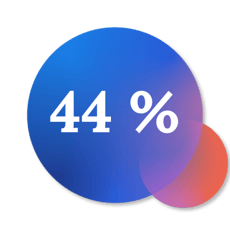
BVG relies on usability tests to check accessibility
Within two weeks, usability testing starts to check accessibility at the BVG Muva app for a mobile lift replacement at bus and train stations.

About BVG Muva
BVG (Berlin public transport) is the most important transport company in Berlin and operates the city's public transport network. With the Muva app, BVG not only offers a flexible travel service to increase the attractiveness of local public transport, by providing services that are not tied to a specific timetable. But also a lift replacement to ensure barrier-free mobility at bus and train stops.
IN A NUTSHELL
QA-Goals
- User testing with people with restricted mobility
- Identify sources of error for comprehensibility
IN A NUTSHELL
Results
- Feedback on the actual use of the app and notices about the Muva offer
- Fast test implementation and results from a user perspective
The project
![]() Project type
Project type
App testing
![]() Industry
Industry
Mobility
![]() Service type
Service type
Accessibility testing
![]() QA-Services
QA-Services
Usability testing for accessibility
![]() Projekttyp
Projekttyp
Consulting
![]() Servicetyp
Servicetyp
QA-Beratung
![]() QA-Services
QA-Services
QA-Analyse, Maturity Assessment, Strategie & Maßnahmen-planung
![]() Genutzte Plattformen
Genutzte Plattformen
Jira, Confluence
![]() Branche
Branche
Einzelhandel
Challenge
The BVG Muva service is designed to facilitate accessibility in public transport with a mobile lift replacement. But how do passengers accept the app and is it easy to use under different, real-life conditions? A user test should provide answers. The target group of people with limited mobility had to be considered comprehensively. Physical disabilities, age-related walking difficulties or situational restrictions, e.g. when travelling with a pushchair.
Goals and
project start
The common goal: comprehensive insights into app handling, identification of potential for improving usability and efficient commissioning of the app through more frequent bookings of the BVG Muva service.
How did we start the project?
With the start of the project, the recruitment of the test subjects and an initial pre-test were completed within two weeks in collaboration with the PIKSL laboratory in Cologne. This was followed by three days of seven interviews with nine test subjects aged between 21 and 81 with physical and situational impairments. The user tests focussed primarily on the aspect of comprehensibility. Every usability test is also a test of comprehensibility and therefore of barriers for different users.
Test method and measures
In accordance with the usability guidelines, a survey guideline was drawn up for the moderated usability tests. The focus was on scenario-based use and the behavior of the test subjects.
A special feature of this study: in addition to the app testing, the Appmatics team checked the comprehensibility of the BVG's physical notices. The usability test thus provided an answer to whether test subjects are motivated to download the app by the notices on the lifts, and whether the service is explained well.
The advantages of user tests
Checking accessibility by means of a user test offers the opportunity to cover comprehensive factors in the target group. In this case, the test subjects included:![]() Parents with strollers
Parents with strollers
The occurrence of multiple disabilities is not an isolated case. Testing these different combinations of restrictions can be covered well in the guided user test.
The advantages:

Further case studies
AGILE TESTING
QA consulting for international trade and beyond
MANUAL TESTING
Eurowings ensures the quality of travel & bookings through constant testing
AUTOMATED TESTING
Yello improves customer experience and app performance
Contact our team
Do you have questions about the project or your own QA challenge? Our team looks forward to hearing from you.



.png?width=252&height=151&name=case_cover_yello%20(2).png)